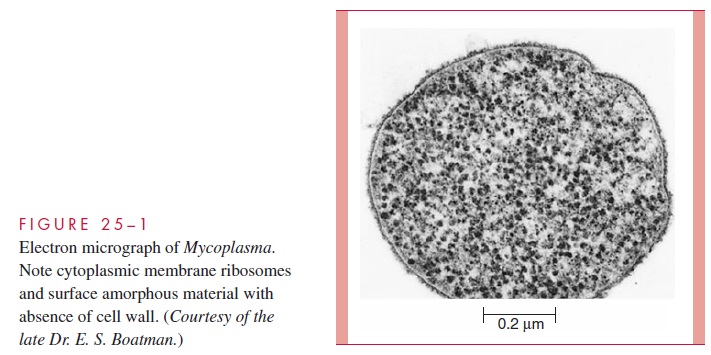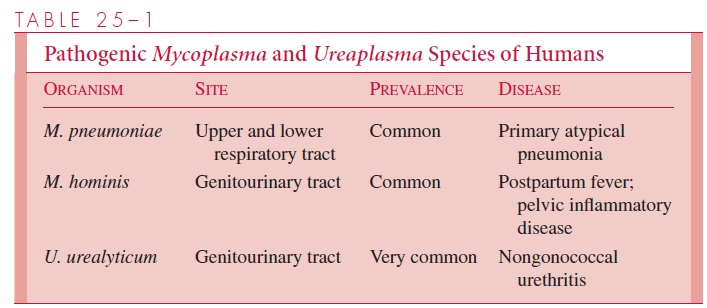Chapter: Medical Microbiology: An Introduction to Infectious Diseases: Mycoplasma and Ureaplasma
Mycoplasma and Ureaplasma - Microbiology
MICROBIOLOGY
The organisms have diameters of about 0.2 to 0.3 mm, but they are highly plastic and pleomorphic and may appear as coccoid bodies, filaments, and large multinu- cleoid forms. They do not have a cell wall and are bounded only by a single triple- layered membrane (Fig 25 – 1) that, unlike other bacteria, contains sterols. The sterols are not synthesized by the organism but are acquired as essential components from the medium or tissue in which the organism is growing. Lacking a cell wall, Mycoplasma and Ureaplasmastain poorly or not at all with the usual bacterial stains. Their double- stranded DNA genome is small, probably because of lack of genes encoding a com- plex cell wall. M. pneumonia is an aerobe, but most other species are facultatively anaerobic.All grow slowly inenriched liquid culture medium and on special Mycoplasma agar to produce minute colonies only after several days of incubation.The center of the M. pneumoniae colony grows into the agar and appears denser, giving the appearance of an inverted “fried egg.” Growth in culture is inhibited by spe- cific antisera directed at the particular species. Colonies of M. pneumoniaebind red blood cells (RBCs) onto the surface of agar plate cultures (hemadsorption). This is due to binding by the mycoplasma to sialic acid – containing oligosaccharides present on the RBC surface.


Related Topics